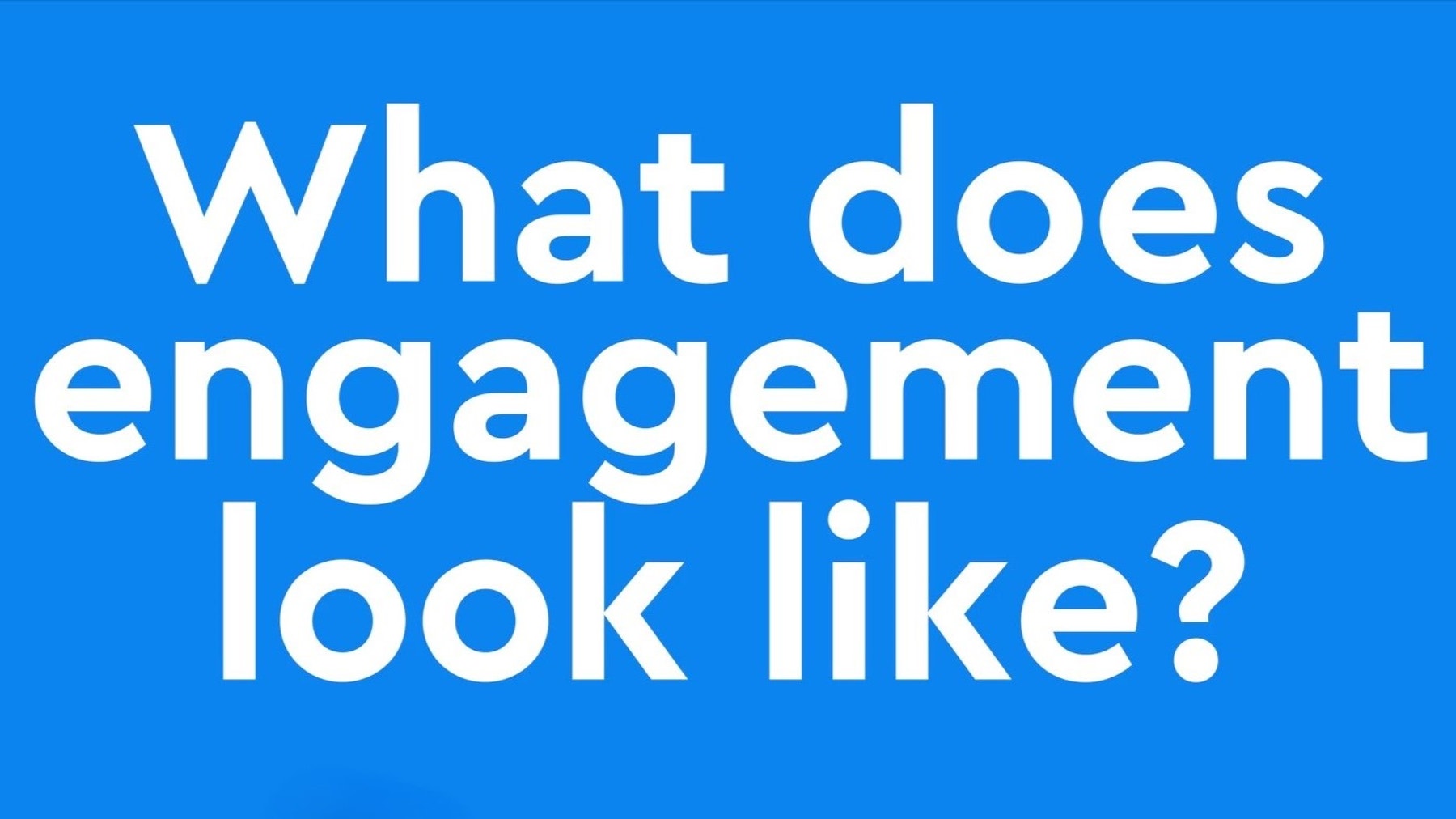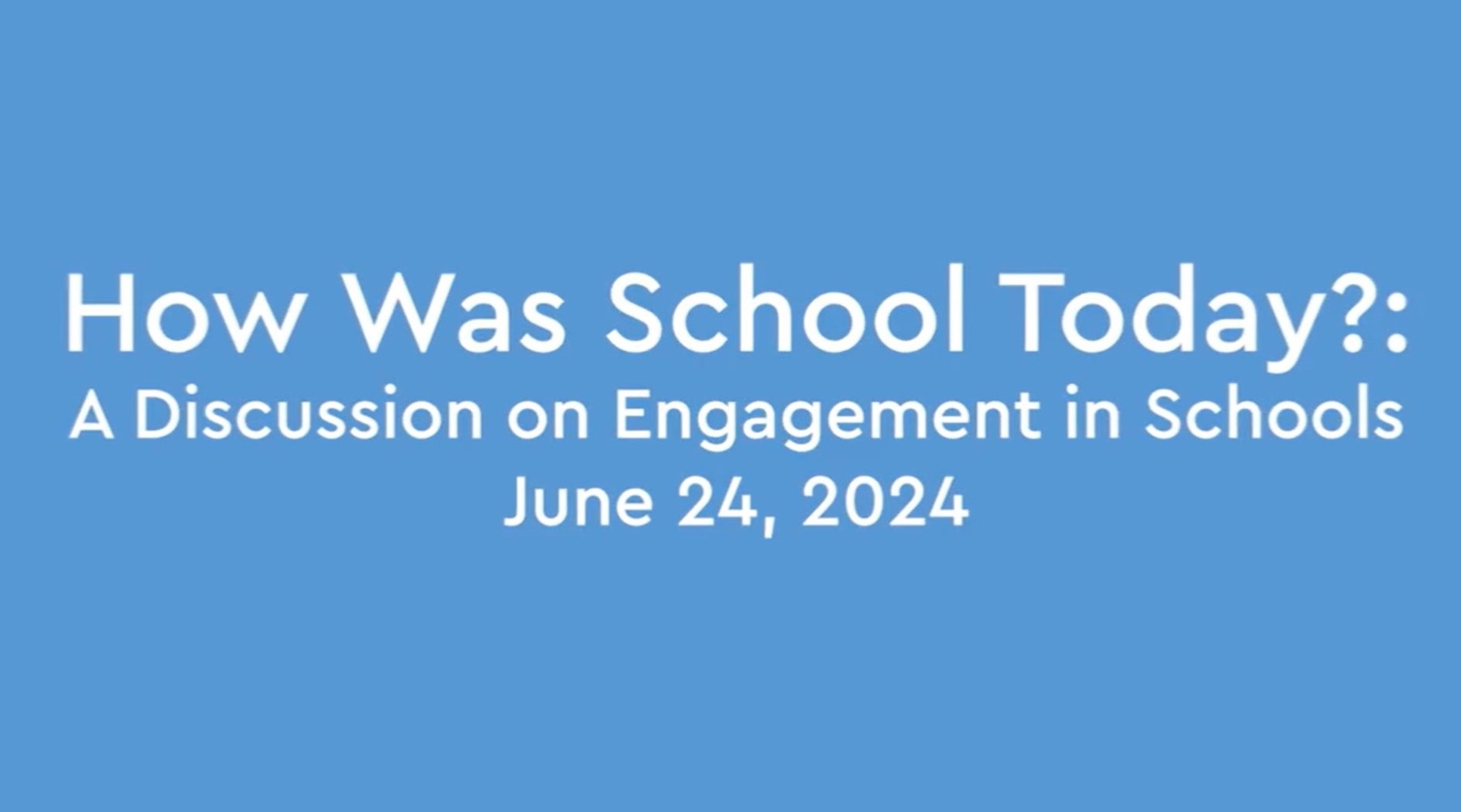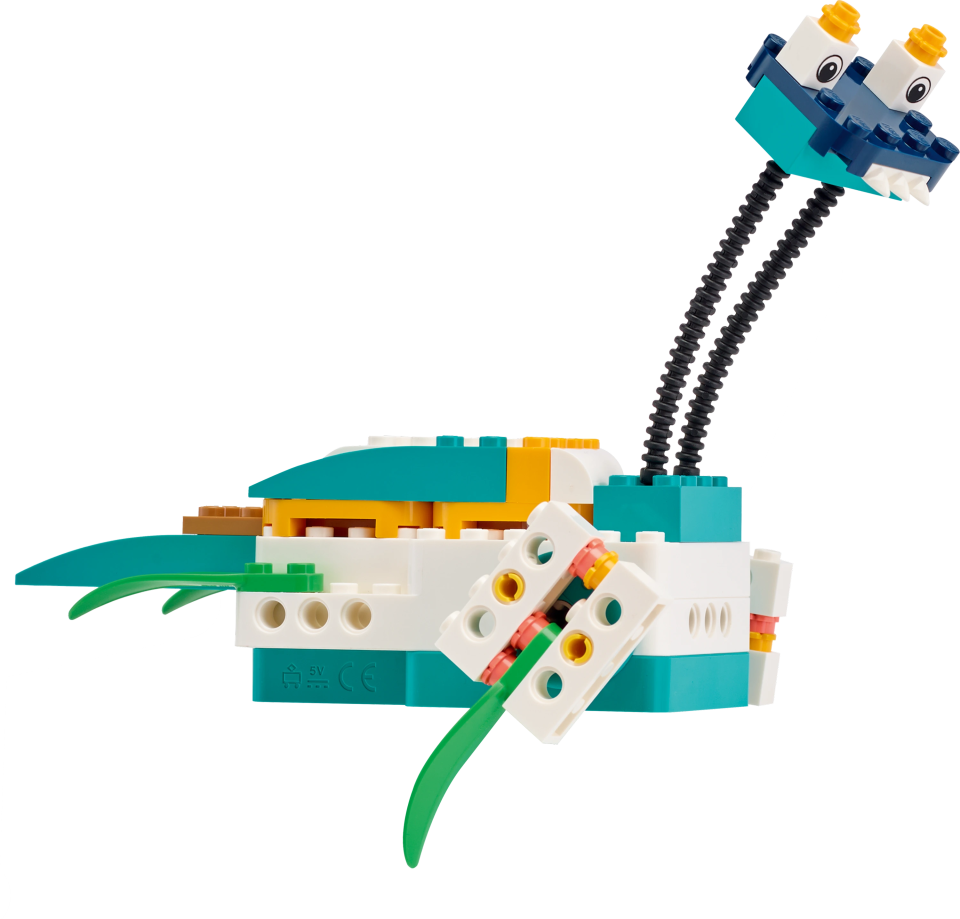Student engagement - everything you need to know
All educators agree that student engagement is critical to learning. Yet, it remains a widespread challenge. Studies suggest that about 50% of students feel disengaged from their studies most of the time1, and an alarming 80% of teachers express concern over student engagement in their classrooms2.
However, this isn't just a matter of students 'checking out'. Disengagement presents in various forms, including a lack of interest, disconnection from lesson material, and even participation without genuine engagement. And the reasons are many. Some students may not see the relevance, while others may feel unmotivated or overwhelmed by content they don't understand.
In this blog, we’ll explore student engagement: what it is, why it matters, and the causes. We’ll also suggest practical strategies to help educators encourage students to play an active role in the classroom.

What is student engagement?
Alba and Fraumeni define student engagement as “a condition of emotional, social, and intellectual readiness to learn characterized by curiosity, participation, and the drive to learn more.”3
Generally speaking, “student engagement” is grounded in the assumption that when students are “interested and inspired,”4 their learning improves. Yet student engagement is not simply about capturing learners’ attention. It’s about how they learn.
Humans are wired to ask questions, solve problems, and make sense of the world5. This intrinsic curiosity is the foundation of meaningful engagement, but it is not automatic. Educators play a critical role in activating this natural curiosity and turning it into active lesson participation.
When students are cognitively engaged and inspired to find meaning in educational challenges, it leads to sustained engagement over time—engagement that supports academic outcomes and strengthens confidence, resilience, and well-being, making teaching more meaningful and worthwhile.

3 Types of Student Engagement
When teachers understand student engagement types, as more than just seeming excitement and interest, they’re more equipped to define clear strategies and overcome disengagement in the classroom.
With this in mind, let’s take a closer look at the different types of student engagement defined by Fredericks, Blumenfeld, and Paris6:
Behavioral engagement
This type of engagement focuses on participation, rule-following, and conduct—paying attention, joining in, and making a genuine effort with academic tasks without disrupting the lesson. But remember, just because a student is 'doing' doesn't mean they're engaging or working towards the lesson objectives. It's the intent behind the action that counts.
Cognitive engagement
This type of engagement refers to a student’s psychological investment in their learning and links to their strategic, self-regulated learning behaviors. It occurs when students are focused on understanding challenging ideas and are ready to learn complex skills requiring deeper mental processing.
Emotional engagement
Emotional engagement considers how students feel about learning and what drives their desire to engage. When students feel a sense of belonging and a positive emotional connection to school, passive learning transforms into active exploration.
Why is student engagement important?
Student success is dependent on engagement. Gallup’s research7 revealed that students engaged in their education are 2.5 times more likely to believe in their ability to do well and 4.5 times more likely to feel hopeful about the future than students who report feeling disengaged.
However, as we’ve already mentioned, engagement in the classroom extends beyond simply paying attention. When teachers inspire genuine motivation, learners adopt a positive attitude towards their education, and learning becomes more efficient, lessening the need for additional study time8. If students are engaged, they transition from passive receivers of information to active seekers of knowledge. This shift is where we start to see more student agency, and learners move from extrinsically motivated (learning for grades or approval) to intrinsic motivation (learning for personal satisfaction and growth), which fosters emotional and behavioral investment.
Lessons that involve the right level of challenge are more likely to ensure students are cognitively engaged in the content without frustration or boredom. One key factor in maintaining this engagement is being able to stretch students just beyond their comfort zone. This often results in a state of “flow,” where the balance between existing knowledge and appropriate challenge leads to focused attention—allowing learners to stretch their capabilities.
In addition to challenge, enjoyment is also essential in sustaining engagement. Pleasurable learning experiences encourage students to persist and find meaning in their tasks, leading to lasting interest in the subject.
Building a classroom where it is safe to take risks encourages experimentation and helps students feel comfortable. Viewing failure as an integral part of the learning process allows students to become more emotionally and behaviorally engaged, resilient, and open to learning from mistakes.
It’s essential to acknowledge that teachers also experience disengagement, and the repercussions are often evident in student motivation and classroom energy. However, high-quality professional development can help re-energize educators, build their confidence, and strengthen their relationships with students.
Watch LEGO® Education’s Student Engagement Panel with District and Education Leaders to hear the experts discuss why student engagement is so important.

3 causes of disengagement in the classroom
Disengaged students are disheartening for any educator, regardless of their experience, but pinpointing exactly why isn’t always straightforward. Before we explore student engagement strategies, it is essential to understand the reasons that cause students to disengage. Using Li and Xue’s research9 on the influencing factors of student engagement, we’ll look at the top three reasons students aren't as involved in the learning process as they could be.
Student personality, experiences, and knowledge
A student's unique traits, as well as their prior experience and subject knowledge, play a significant role in their engagement.
For example, introverts and extroverts will engage with lesson material in different ways, a student's resilience or openness can affect how they tackle new challenges. Both positive and negative experiences of subjects can influence how they perceive lessons and their abilities.
Classroom environment
Learner behavior and environment play a crucial role in shaping engagement. Whether students arrive energized or disengaged, their actions can influence the whole class.
A well-managed classroom, with a thoughtful layout and supportive culture, fosters emotional connections and active participation, helping students feel more comfortable. Collectively, these strategies set the tone for meaningful and engaging learning experiences.
Learning and thinking Mindset
Every learner’s brain has its own wiring; some are logic and process-driven, while others prefer the freedom to think creatively. When lessons tap into the right circuit, it can transform engagement. Teachers should provide a variety of tasks that appeal to students’ creativity and logic to ensure they truly engage every learner.
Strategies for improving student engagement
Now that we understand the factors influencing student engagement let’s explore practical strategies—because 9 in 10 global teachers believe it’s never too late to re-engage students in learning10.
Get students hands-on
Hands-on learning experiences are critical in the classroom because they allow students to learn by doing, which fosters active participation. Whether it's a science experiment, a history re-enactment, or simply building with LEGO® bricks, hands-on activities lead to engagement.
In fact, students are twice as likely to engage in science class when hands-on learning is involved11. These experiences transform abstract concepts into tangible ideas and invite students to engage with, touch, manipulate, and interact with learning materials.
Connect to the real world
When learning goes beyond the classroom, students see scientific ideas not just as textbook concepts but as real-world knowledge that connects to their lives. Whether linking Pythagoras to a skatepark or Shakespeare to contemporary music, teachers can engage their classes by linking lesson content to real-world situations. It can also open students’ eyes to industries or potential careers they may never have considered.
Facilitate talk and collaboration
This strategy is about unlocking a classroom’s collective brainpower and teaching students to speak the subject’s language. As students collaborate on projects or discuss topics, they learn to communicate effectively, argue constructively, and consider multiple perspectives, which helps boost both behavioral and cognitive engagement. Also, when students practice academic and subject-specific vocabulary—the foundation of scientific thinking—and learn to speak like experts.
Ask big questions
Asking big questions allows students to think expansively without fearing they will get it wrong. They push learners to question and consider lesson content outside how it is taught rather than simply remembering information. Questions such as "What if we could photosynthesize like plants?" or "How would history change if the internet had been invented in the 1800s?" invite curiosity and a quest for answers, which helps foster cognitive engagement.
Leverage students’ interests
When you tailor lessons to students’ interests, you immediately speak their language. Love for gaming? Let's code a simple game. Lifelong baseball fan? How about a physics lesson on the science of motion? It shows them that their voices and preferences matter, which can help inspire emotional engagement in the classroom. This is also known as meeting students where they are, a differentiated, student-centric approach that allows students to co-create their classroom experience and take responsibility for their studies.
How to measure student engagement
Tracking student engagement can feel overwhelming. Learners might seem hard at work, but that doesn’t always equate to genuine engagement. Real engagement requires active, mental participation, and gauging this requires educators to listen—listen for the authentic use of vocabulary, depth of understanding in discussions, and accurate connections in output. In addition to summative assessments, educators should observe, guide, and pay attention to students' understanding of a topic.
Here’s a seven-part checklist to help you measure engagement in the classroom:
- Observation over tests: Look for active, meaningful interactions with the content rather than passive task completion.
- Listen to the talk: Pay attention to how students discuss concepts. Are they using disciplinary vocabulary correctly? Can they explain ideas in their own words?
- Rubrics for real engagement: Develop rubrics that capture the nuances of engagement, not just the right answers.
- Student-driven questions: When students ask their own questions, it shows deep engagement.
- Peer interaction: Observe how students collaborate and share ideas. Is there a mutual exchange of thoughts that builds upon each other's contributions?
- Formative assessments: Use quick check-ins to gauge understanding and inform your teaching in real time.
- Self-assessment: Encourage students to reflect on their engagement and understanding, fostering self-awareness and ownership of their learning.
Project Tomorrow (2021). Empowering and Engaging Student Voice to Create Equity in Education: Findings from the 2020-21 Speak Up Research Project. [online] Available at: https://www.tomorrow.org/wp-content/uploads/2023/01/2021_K12_Report_ProjectTomorrow.pdf [Accessed 19 Apr. 2024].
Gradient Learning (2023). Gradient Learning Poll: Student Engagement. [online] gradientlearning.org. Available at: https://gradientlearning.org/poll/student-engagement [Accessed 19 Apr. 2024].
Abla , C. and R. Fraumeni, B. (2019). Student Engagement Evidence-based Strategies to Boost Academic and Social-Emotional Results. [online] p.2. Available at: https://files.eric.ed.gov/fulltext/ED600576.pdf [Accessed 19 Apr. 2024].
Xello. What is student engagement? [online] Xello. Available at: https://xello.world/en/blog/student-engagement/what-is-student-engagement/ [Accessed 20 May 2025].
Great Schools Partnership (2016) Student engagement. [online] The Glossary of Education Reform. Available at: https://www.edglossary.org/student-engagement/ [Accessed 20 May 2025].
Thomsen, B.S. (n.d.) Unpacking the power of engagement (Part 1). [online] LEGO® Education. Available at: https://education.lego.com/en-us/blog/power-of-engagement/ [Accessed 20 May 2025].
Fredricks, J.A., Blumenfeld, P.C. and Paris, A.H. (2004). School Engagement: Potential of the Concept, State of the Evidence. Review of Educational Research, [online] 74(1), pp.59–109. doi:https://doi.org/10.3102/00346543074001059.
Gallup. (2018). School Engagement Is More Than Just Talk. Retrieved from https://www.gallup.com/education/267521/focus-student-engagement-better-academic-outcomes.aspx. Gallup.com
Nonis, S. A., & Hudson, G. I. (2010). Performance of college students: Impact of study time and study habits. Journal of Education for Business, 85, 229–238.
Li, J. and Xue, E. (2023). Dynamic Interaction between Student Learning Behaviour and Learning Environment: Meta-Analysis of Student Engagement and Its Influencing Factors. Behavioral Sciences, [online] 13(1), p.59. doi:https://doi.org/10.3390/bs13010059.
LEGO® Education (2024) State of Classroom Engagement Report. Available at: https://education.lego.com/en-us/classroom-engagement-report/ (Accessed: 21 May 2025).




